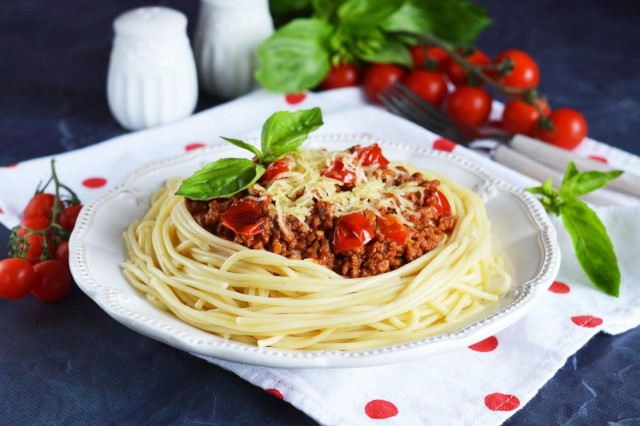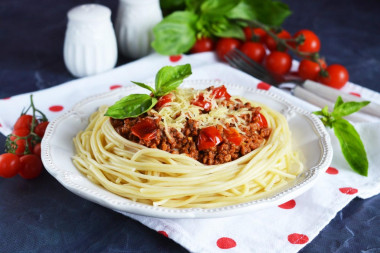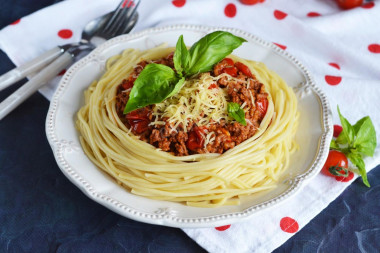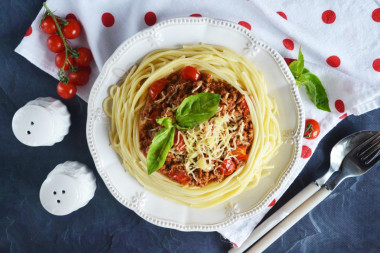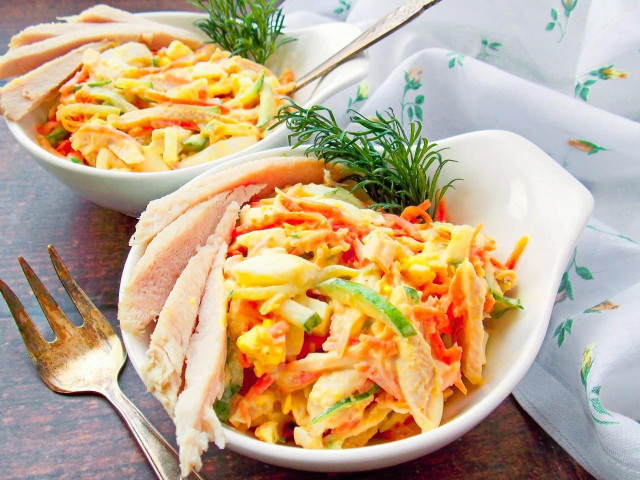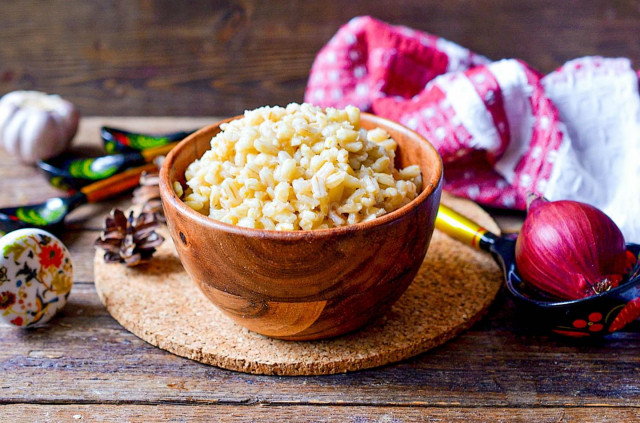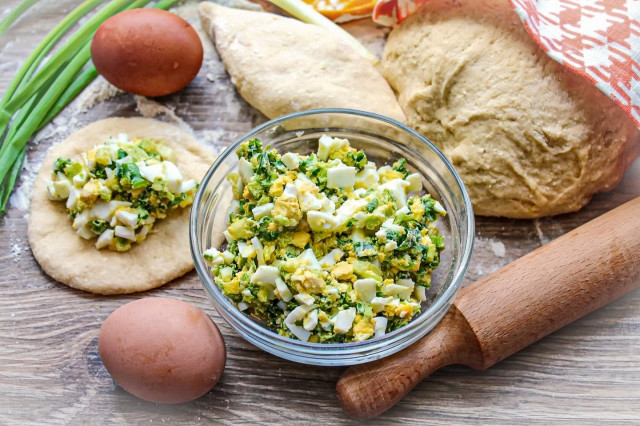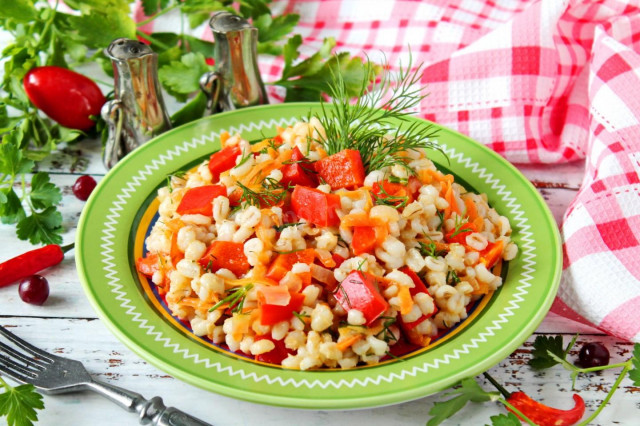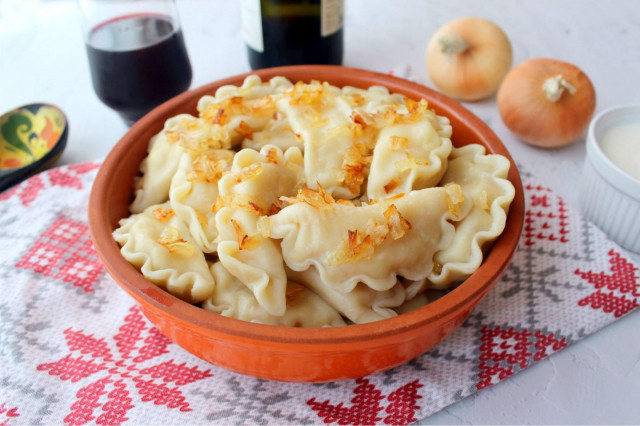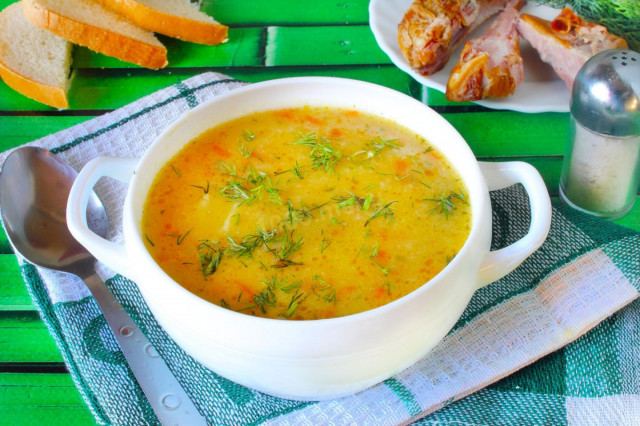Composition / ingredients
Step-by-step cooking
Step 1:
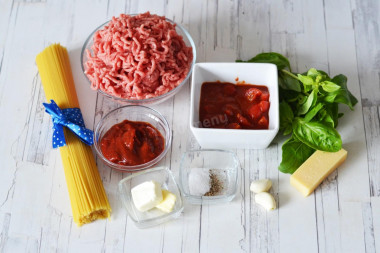
How to make pasta with minced meat and tomato paste? First, prepare the necessary ingredients. I use spaghetti in the recipe, but you can replace them with another long pasta, for example, tagliatelle, fettuccini, bucatini, linguini. You can use ground beef, like mine, or mixed.
Step 2:
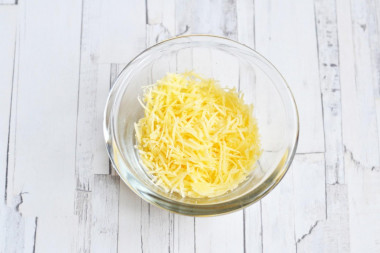
Grate the cheese on a fine or medium grater. You can use any cheese - if you want a dish closer to Italian cuisine, take Parmesan. But the usual hard cheese of the Russian type is also suitable.
Step 3:
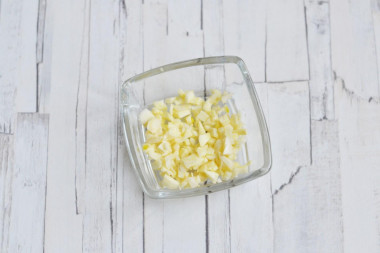
Peel the garlic and finely chop it with a knife.
Step 4:

Boil a large amount of salted water on the stove at the rate of: about 1 liter of water and 1 tablespoon of salt per 100 g of pasta without a slide. However, I advise you to put a little less salt, because we will still have salted minced meat. Put the spaghetti in the water and boil until al dente for about 7-8 minutes.
Step 5:
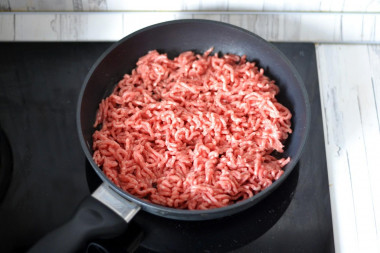
While the pasta is cooking, prepare the tomato and meat sauce. Heat the butter in a frying pan over medium heat. Put the minced meat and fry for about 5 minutes, breaking up the lumps, until the whole minced meat turns dark.
Step 6:
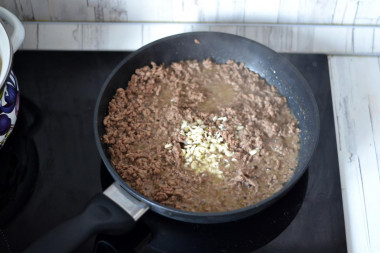
Depending on the quality of the minced meat and the amount of fat, more or less moisture will be released from it. You can wait until most of the liquid evaporates, but I advise you not to evaporate it too much - this way the sauce will turn out juicier. Pour the chopped garlic into the pan and fry all together, stirring, for 2 minutes.
Step 7:
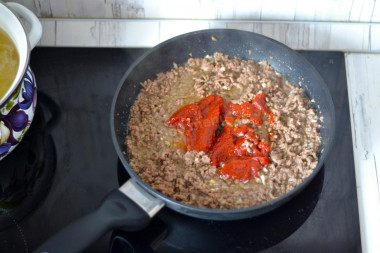
Lay out the tomato paste and mix. Simmer all together for 2-3 minutes.
Step 8:
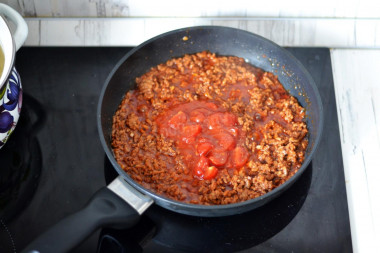
Add tomatoes in their own juice to the minced meat. Season everything with salt, pepper and mix. Warm everything up together for another 2-3 minutes. If you don't have tomatoes in your own juice, you can make them yourself: take 2 medium tomatoes and peel them. Grate one tomato on a fine grater to make a puree, and cut the second into small pieces. And stir. If desired, you can add a little ketchup to the tomato mass.
Step 9:
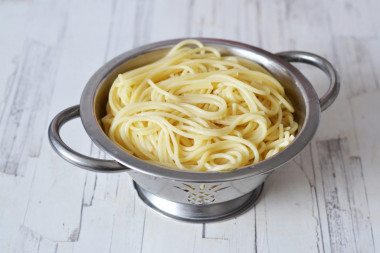
While the minced meat is ready, flip the finished spaghetti into a colander and let the water drain.
Step 10:
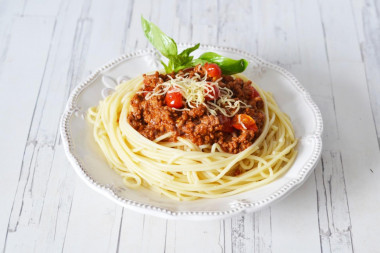
Next, you can simply transfer the pasta to the minced meat in the pan and mix. But I suggest a more refined serving: spread the pasta on plates, spread the tomato-meat mixture on top, sprinkle cheese on top and garnish with a sprig of basil. Bon appetit!
How to cook pasta properly, how to cook pasta al dente, how to choose a quality product to avoid disappointment and much more, read the article "Pasta and pasta - the subtleties of choice and secrets of cooking" .
Any oils are useful only until a certain temperature is reached - the point of smoking, at which the oil begins to burn and toxic substances, including carcinogens, are formed in it. How to determine the roasting temperature and choose the best oil for frying, and which is better not to use at all, read here .
How to choose the perfect pot for soup, porridge or pickling cucumbers read the article about pots.
Caloric content of the products possible in the composition of the dish
- Tomatoes - 23 kcal/100g
- Dutch cheese - 352 kcal/100g
- Swiss cheese - 335 kcal/100g
- Russian cheese - 366 kcal/100g
- Kostroma cheese - 345 kcal/100g
- Yaroslavsky cheese - 361 kcal/100g
- Altai cheese 50% fat content - 356 kcal/100g
- Soviet cheese - 400 kcal/100g
- Cheese "steppe" - 362 kcal/100g
- Uglich cheese - 347 kcal/100g
- Poshekhonsky cheese - 350 kcal/100g
- Lambert cheese - 377 kcal/100g
- Appnzeller cheese with 50% fat content - 400 kcal/100g
- Chester cheese with 50% fat content - 363 kcal/100g
- Edamer cheese with 40% fat content - 340 kcal/100g
- Cheese with mushrooms of 50% fat content - 395 kcal/100g
- Emmental cheese with 45% fat content - 420 kcal/100g
- Gouda cheese with 45% fat content - 356 kcal/100g
- Aiadeus cheese - 364 kcal/100g
- Dom blanc cheese (semi-hard) - 360 kcal/100g
- Lo spalmino cheese - 61 kcal/100g
- Cheese "etorki" (sheep, hard) - 401 kcal/100g
- White cheese - 100 kcal/100g
- Fat yellow cheese - 260 kcal/100g
- Altai cheese - 355 kcal/100g
- Kaunas cheese - 355 kcal/100g
- Latvian cheese - 316 kcal/100g
- Limburger cheese - 327 kcal/100g
- Lithuanian cheese - 250 kcal/100g
- Lake cheese - 350 kcal/100g
- Gruyere cheese - 396 kcal/100g
- Garlic - 143 kcal/100g
- Fresh basil - 27 kcal/100g
- Dried basil - 251 kcal/100g
- Ground black pepper - 255 kcal/100g
- Butter 82% - 734 kcal/100g
- Amateur unsalted butter - 709 kcal/100g
- Unsalted peasant butter - 661 kcal/100g
- Peasant salted butter - 652 kcal/100g
- Melted butter - 869 kcal/100g
- Mixed minced meat - 351 kcal/100g
- Tomato paste - 28 kcal/100g
- Salt - 0 kcal/100g
- Spaghetti - 338 kcal/100g

